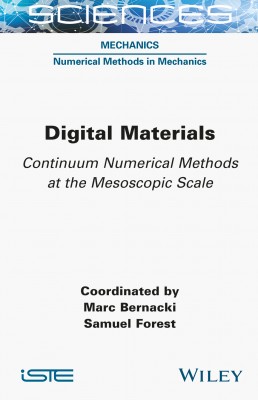
Digital materials are integral to the modern design methods for industrial components and structures, allowing mechanical properties to be predicted from a description of the microstructure and behavior laws of the constituent parts.
This book examines a wide range of material properties, from transport phenomena to the mechanics of materials and microstructure changes in physical metallurgy. The fundamental mechanisms of deformation, annealing and damage to materials involve complex atomic processes; these have been explored and studied by numerical simulations, such as molecular dynamics.
In contrast to this minutely detailed approach, Digital Materials explores how these mechanisms can instead be integrated into an approach that considers the continuum of the physics and mechanics of materials at the mesoscopic scale. The book thus focuses on the mechanics of continuous media and the continuum thermodynamics of irreversible processes. The models displayed take the myriad properties of different materials into account, in particular their polycrystalline and/or composite natures; this becomes an intermediate step toward establishing effective laws for engineers in the processes of structure calculation and manufacturing.
1. Dislocation-based Mechanics: The Various Contributions of Dislocation Dynamics Simulations, Sylvain Queyreau.
2. Statistical Approach to the Representative Volume Element Size of Random Composites, Dominique Jeulin and Samuel Forest.
3. Analytical Micromechanical Methods for Elasto-Viscoplastic Composites and Polycrystals, Stéphane Berbenni and Samuel Forest.
4. Vertex and Front-Tracking Methods for the Modeling of Microstructure Evolution at the Solid State, Marc Bernacki.
5. Phase Field: Theory, Numerical Implementation and Applications, Ingo Steinbach and Oleg Shchyglo.
6. Level-Set Method for the Modeling of Microstructure Evolution, Marc Bernacki.
7. Resolution Methods for Digital Materials – Recent Developments of Cellular Automaton Method, Lukasz Madej and Mateusz Sitko.
Marc Bernacki is Professor of Physical and Computational Metallurgy at MINES Paris PSL, France. He leads the DIGIMU consortium, which develops new numerical methods for modeling microstructure evolutions in the context of metal forming and their applications.
Samuel Forest is Research Director at the CNRS, Professor of Continuum Mechanics at MINES Paris PSL, France, and a member of the French Academy of Sciences. His work focuses on modeling and simulation in the mechanics of materials.